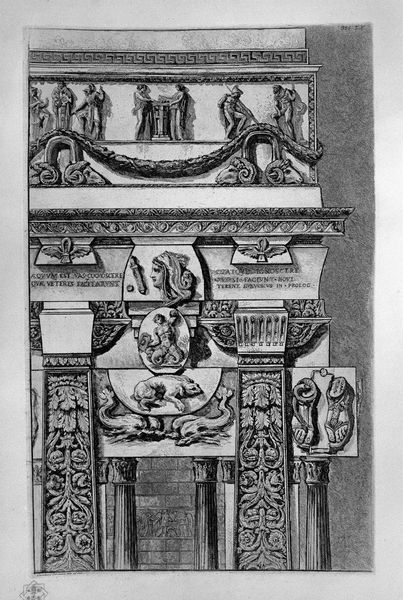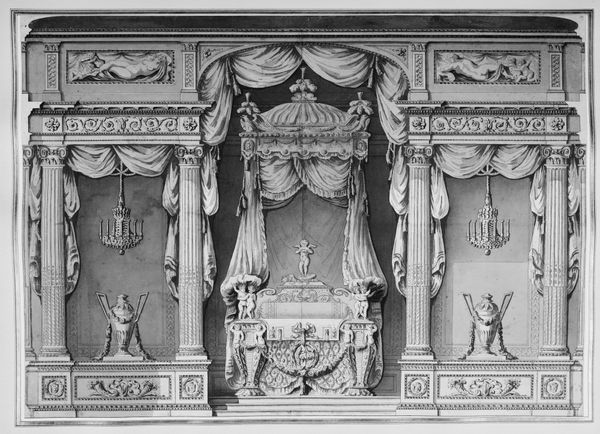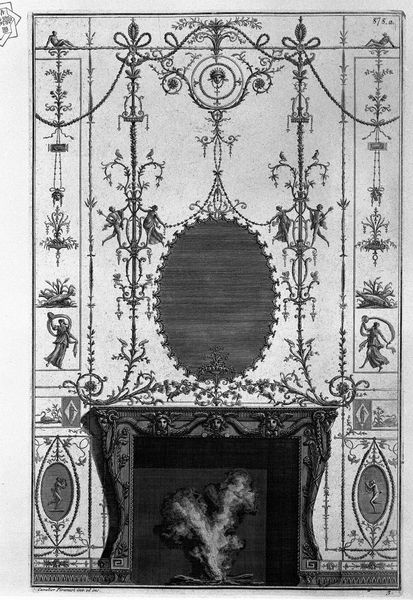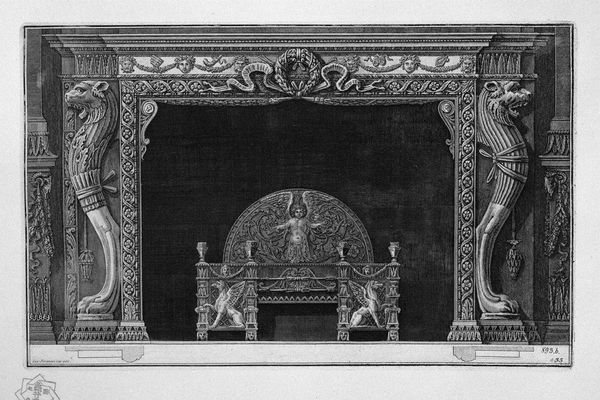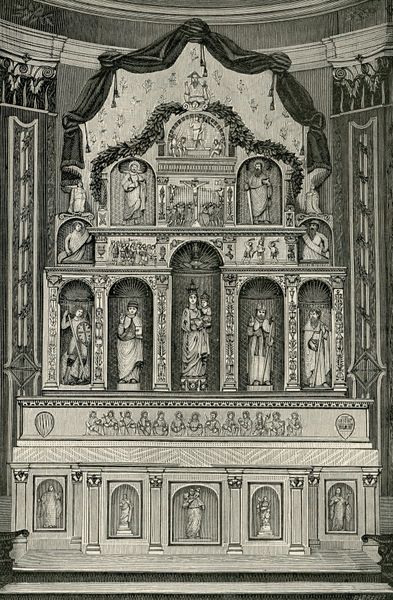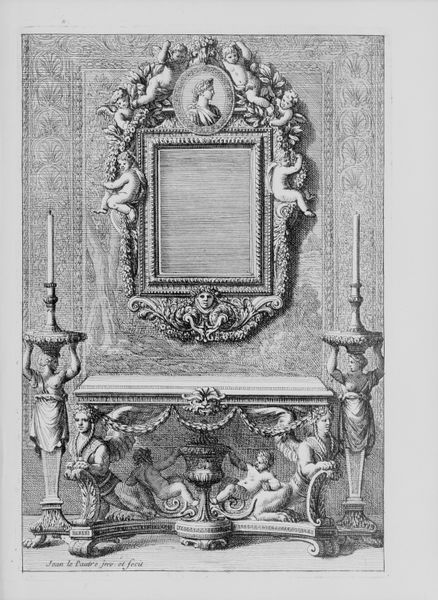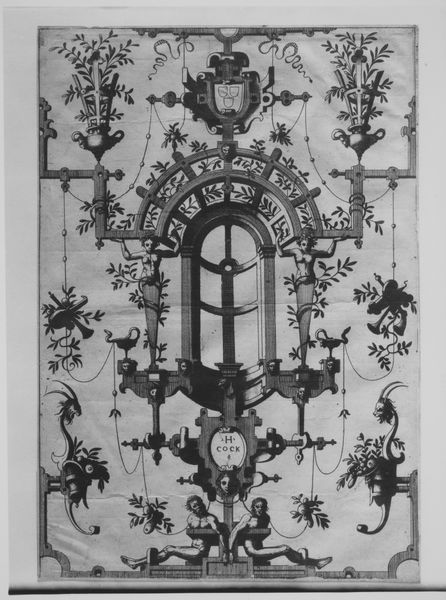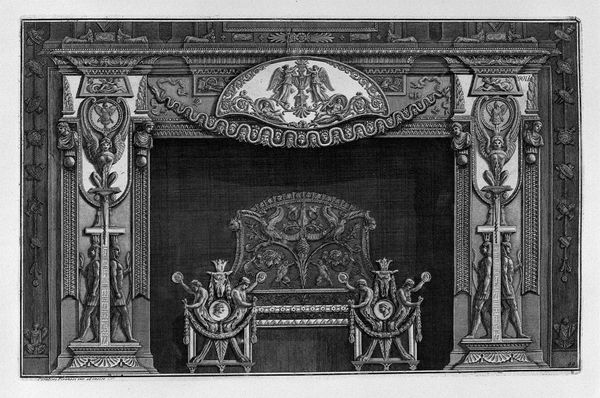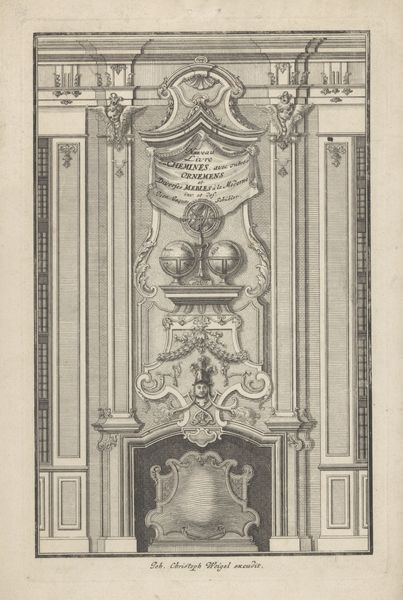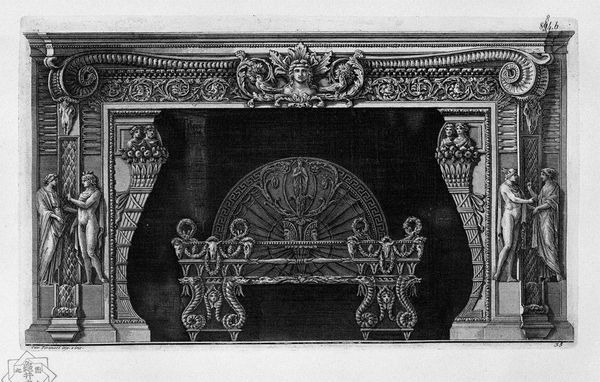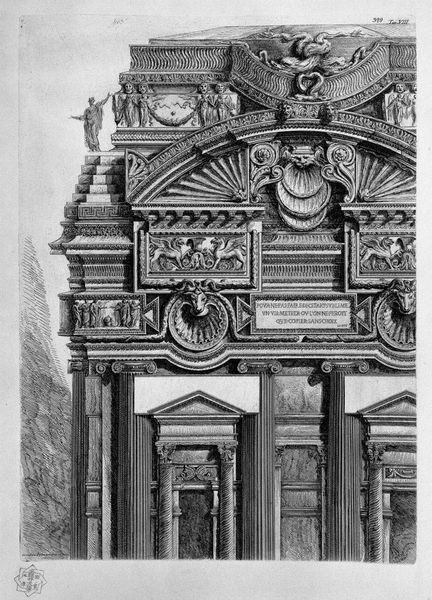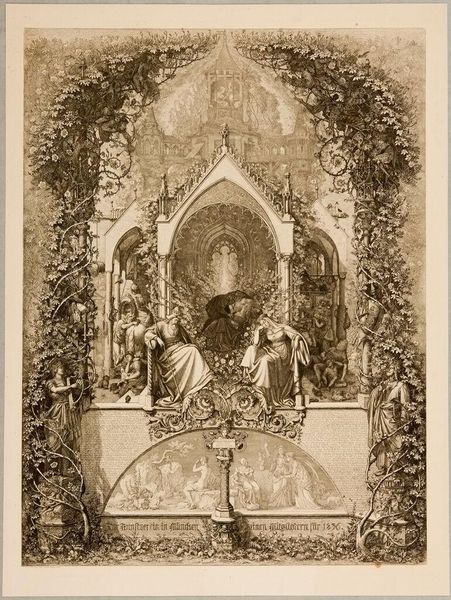
Interior Elevation of Reims Cathedral with a Statue of King Louis II 1815
0:00
0:00
drawing, print, architecture
#
portrait
#
drawing
#
neoclacissism
# print
#
sculpture
#
11_renaissance
#
history-painting
#
architecture
Dimensions: 29 15/16 x 18 1/16 in. (76 x 45.9 cm)
Copyright: Public Domain
Curator: I'm immediately struck by the rigidity, the formalism. It’s all so meticulously planned, so…royal. Editor: We're looking at Charles Percier's "Interior Elevation of Reims Cathedral with a Statue of King Louis II," created in 1815. The print captures a proposed, albeit unexecuted, design for a royal installation within the cathedral. Curator: The candelabras! They reinforce the feeling of calculated splendor and reflect heavenly light onto Louis II's sculptural image. Light as a symbolic extension of royal power and legitimacy, maybe? Editor: Certainly, and situated within the broader Neoclassical movement, the work draws heavily on historical precedent, which underscores its aspirations to revive an imagined golden age—problematic given what it selectively leaves out of that "history". What’s legitimized by erasing other possibilities? Curator: You’re right; the intent here seems less about genuine reverence and more about visually anchoring the Bourbon monarchy. Look at the shields and crowns and the constant reference to older statues in the composition of the architecture, they wanted continuity. Editor: Continuity for whom, though? A project of cultural memory almost exclusively curated by the powerful is what seems to happen in places like Reims, where monarchy marries sacred space. Who gets included or excluded from "official" memory matters greatly. Curator: Yet I still appreciate how it serves as a testament to architecture’s power to visually reinforce ideologies through ornamentation and space—the statue's architectural setting itself becomes symbolic of Louis’ importance. Editor: Exactly! We shouldn't forget that the cathedral, regardless of intention, operates as a public theater, reinforcing hierarchies through designed environments that create very deliberate spatial arrangements for audiences. This kind of work offers a glimpse into how aesthetics work within and prop up systems. Curator: It shows how power gets visualized and, in some ways, sanctified in monuments. So, reflecting on it, I'm thinking not so much about holy light, but about highlighting systems and the perpetuation of ideas through design. Editor: Yes, and considering those mechanisms and their legacies—that’s precisely where I find the most resonance today. Thanks for taking the time to investigate with me.
Comments
No comments
Be the first to comment and join the conversation on the ultimate creative platform.

